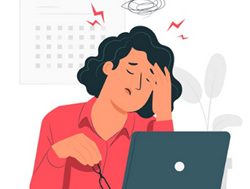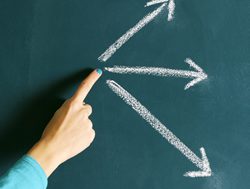Michelle Gibbings* says research shows that poor decision-making increases at the end of a day, or just before the lunch break.
 It’s highly unlikely that you woke us this morning and thought: “My goal today is to make a really bad decision.”
It’s highly unlikely that you woke us this morning and thought: “My goal today is to make a really bad decision.”
Yet, it can be so easy to make poor decisions.
As the field of behavioural economics shows, we are not rational beings, and we regularly make imperfect decisions.
We make decisions based on emotions, use mental shortcuts to find the answer, and can easily be short-sighted and cognitively lazy.
So, if you had to make a really important decision what time of day do you think would be better to make the decision?
Morning or afternoon, or something else?
It turns out that your decision is not just influenced by the time of day but whether you’ve eaten or not.
In 2011, researchers Shai Danziger, Jonathan Levav, and Liora Avnaim-Pesso released their study which looked at factors that can influence how decisions are made.
In their case it was judicial rulings, whereby they examined more than 1,000 rulings made by Israeli judges in 2009.
These judges were presiding over parole hearings in criminal cases.
They found that the judges were more lenient at the beginning of the day, as well as immediately after lunch.
This meant that prisoners were more likely to get a favourable parole ruling if their case was heard at the start of the day.
From then on, the likelihood would steadily decline from about 65 per cent to almost zero.
It would only go back up to about 65 per cent after the judge had been on a break and eaten.
You can liken your brain to your mobile phone battery.
When you go to sleep at night the battery is empty, and when you wake up in the morning it’s fully charged.
Then, each time you make a conscious decision it drains the battery of energy.
So much so, that by the end of the working day your brain’s decision battery is very much depleted.
It’s at that time of the day that you can fall into the trap of default thinking.
That is, deciding the way you have always decided.
This is your brain taking the path of least resistance and using its established patterns of thinking and deciding.
Of course, this doesn’t automatically mean you’ll make a bad decision.
However, when you are facing new situations, trying to solve a complex problem or engaging in a difficult conversation, deciding the way you’ve always decided may well be sub-optimal.
That’s why the concept of ‘sleeping on it’ is really sound advice.
You can also establish processes that help ensure you are examining issues from multiple perspectives by having people around you who will challenge your thought processes.
One useful technique is the practice of having people in the team who build the counter arguments to ideas and solutions.
They ask: “What’s the strongest reason to do something else?” They ask that question for several rounds of answers.
Good decision-making doesn’t happen by accident. It helps to be deliberate about how and when you make decisions.
As author, Jim Rohn said: “You cannot make progress without making decisions.”
*Michelle Gibbings is a Melbourne-based change leadership expert and founder of Change Meridian. She can be contacted at [email protected].
This article first appeared at changemeridian.com.au.











